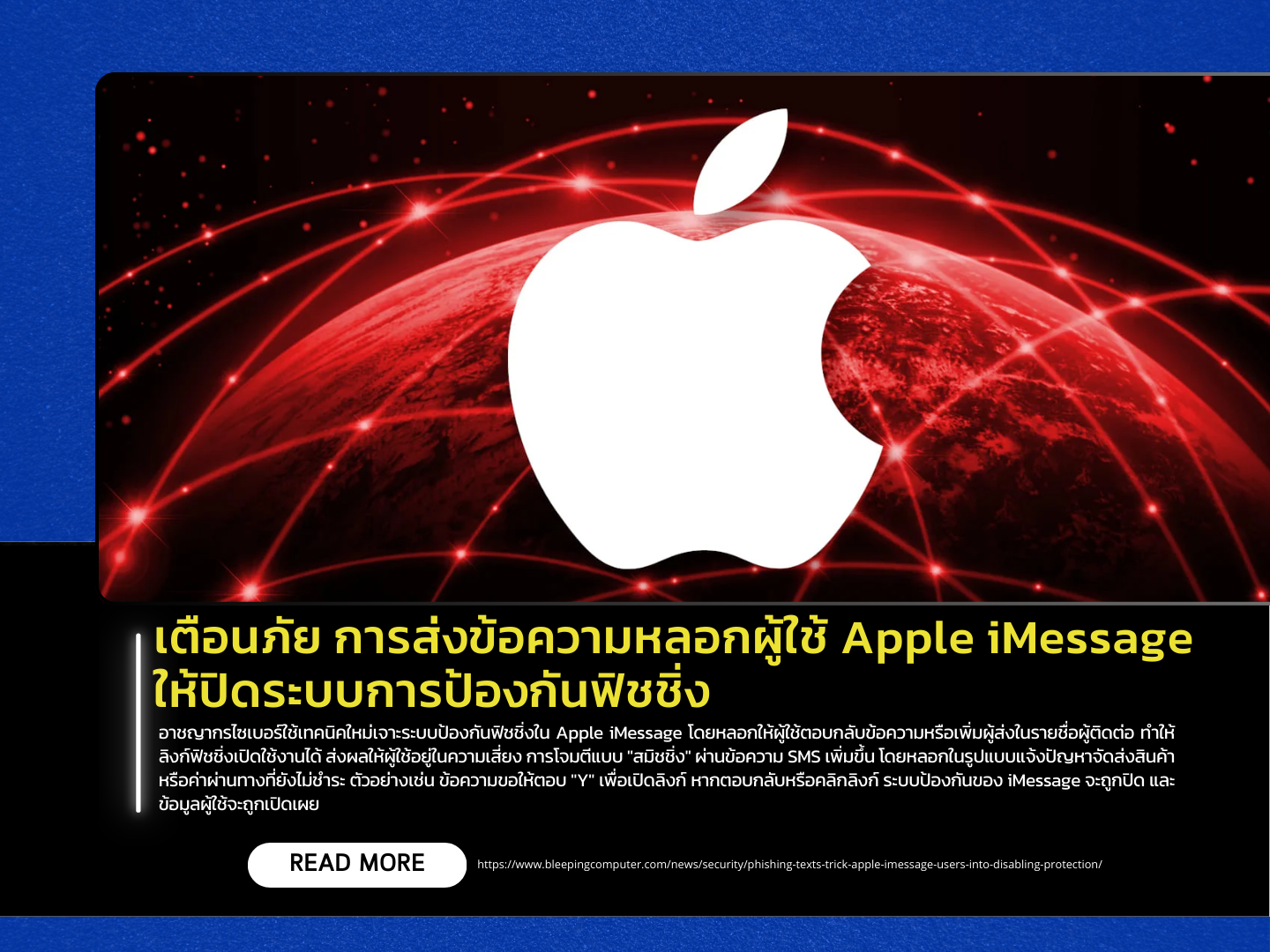17/68 Tuesday, January 14, 2025

Cybercriminals are employing a new deception technique to bypass Apple iMessage’s anti-phishing system, which automatically disables links in messages from unknown senders, whether from email addresses or phone numbers. By tricking users into replying to the message or adding the sender to their contact list, the links become active, placing the user at risk.
The rise of “Smishing” (SMS Phishing) attacks has become significantly more noticeable over the past year due to increased reliance on mobile devices for daily activities, such as bill payments, online shopping, and communication. These scam messages often appear as delivery failure notices or toll fee reminders. A common example is a request for the user to reply with “Y” (Yes) to activate a phishing link, with messages such as:
“Please reply Y, then exit the text message, reopen the text message activation link, or copy the link to the Safari browser to open it.”
If users respond to these messages or click on the links, the links become active, and iMessage’s anti-phishing protection is automatically disabled. Even if users do not click on the active link, replying to the message notifies the attackers that a potential victim has responded, making them a higher-value target.
Reports indicate that elderly users, who are often less aware of cybersecurity threats, are a primary target of these attacks. Some victims have been tricked into providing sensitive information, such as credit card numbers and other personal details, which can be exploited for illegal purposes.
For safety, Apple advises users to avoid replying to or activating any links in SMS messages from unknown senders. If users receive such messages where links are disabled, they should not interact with the message but instead contact the company or individual mentioned directly to verify the message’s legitimacy and protect their personal information.
